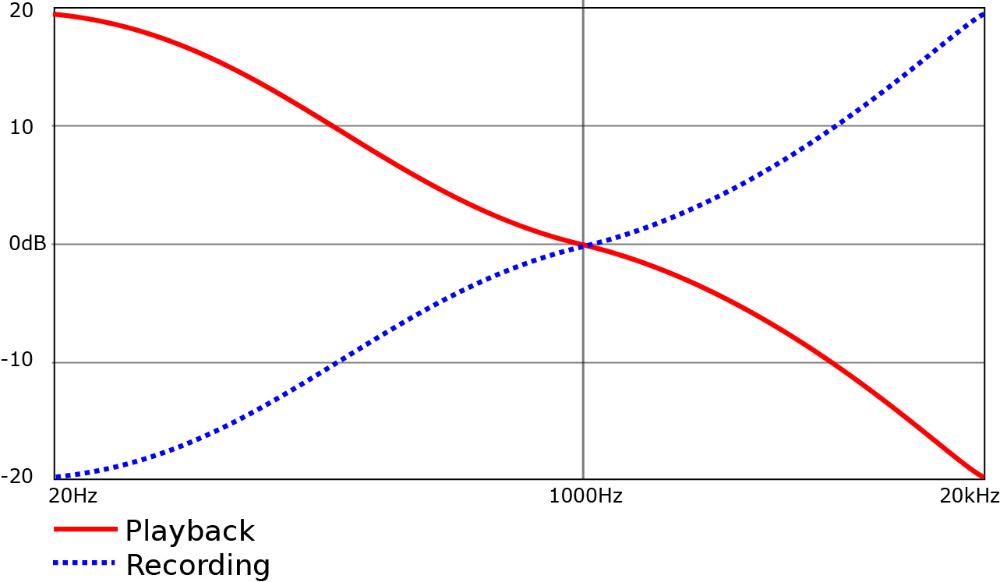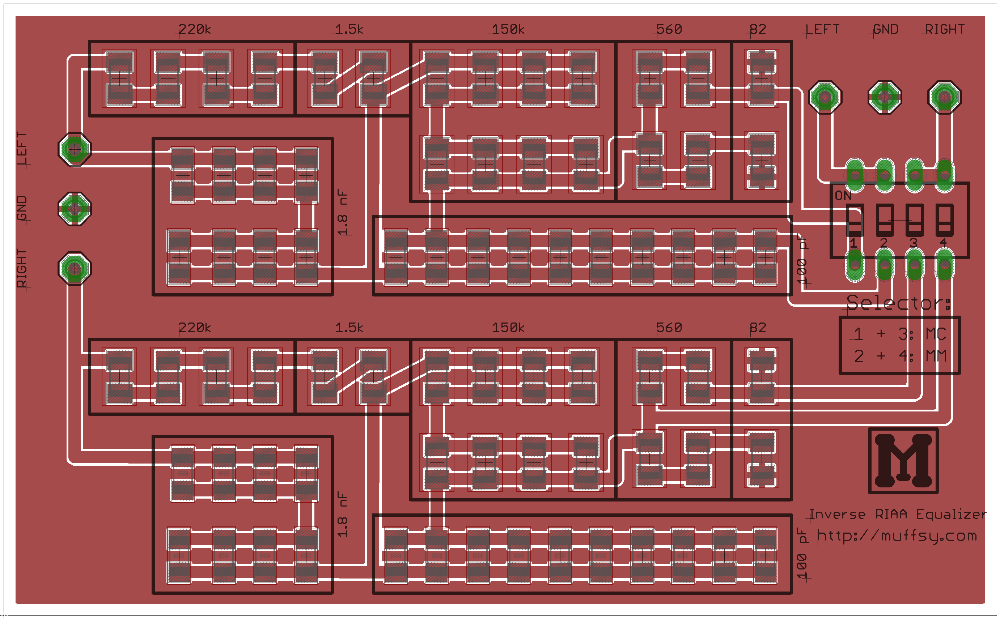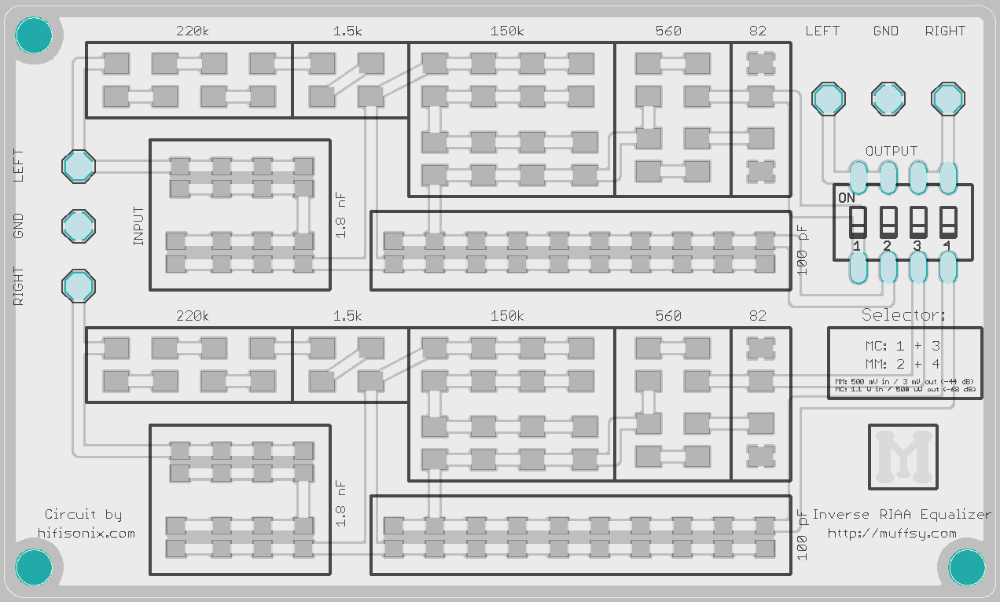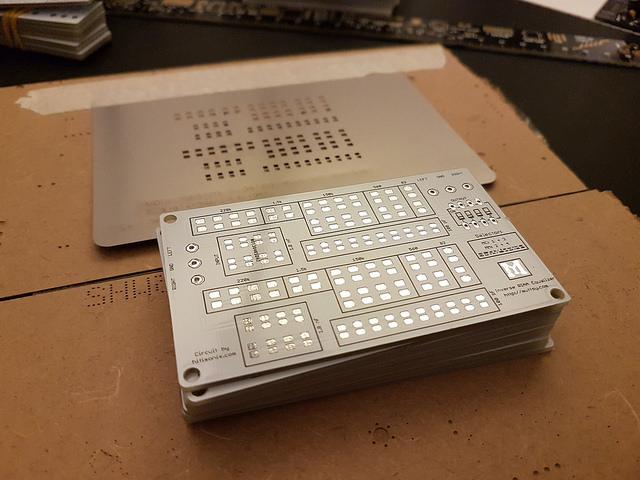This is my first venture into SMD components, so I'm going to have some fun with tools, solder paste, stencils and hot air. :)
Get the gerbers for this side project here: invRIAA.zip
An inverse RIAA circuit has been on my wish list for a while, as it makes testing frequency response so much easier. But how, you might ask?
Well, the first problem you'll encounter when trying to test a phono stage is the fact that few signal generators produce a signal level low enough. If they do, they're often not very accurate at those levels.
The second, and most pressing problem, is that the phono stage applies equalization to your signal. Input a 50 Hz signal at 5 mV, and the output will be almost 5 mV. Input a 20 kHz signal at 5 mV, and the output will barely be measurable. You won't be able to see the frequency response from the readings, without doing a whole lot of conversions (and taking DMM/scope tolerances/misreadings into consideration).
What's needed is something that takes your signal and turns it into what you'd find on a record. That's your inverse RIAA equalizer.
Feeding your signal through an inverse RIAA equalizer, and then through a phono stage, will create a flat output at all frequencies. If this inverse RIAA equalizer is sufficiently accurate, it can be used to measure the accuracy of your phono stage. It's got the added benefit of bringing a higher input signal down to cartridge level.
I got Hagerman's inverse RIAA filter, and while it's a nice little device, I wanted to get one with better accuracy. That's achieved with a lot more components to even out their tolerances.
Not one of my designs, this is the Accurate Inverse RIAA from HIFISonix. I decided to make a stereo version. As I already have lots of screw terminals and DIP switches, I decided to use them too.
There's a lot of components in there, which is why it's SMD (the board size is approx. 8 x 5 cm). All SMD components are 1206 size, so it should be manageable to solder them in. I thought I'd use a hot air gun for the soldering.
I still have to get the boards manufactured, and I need components for it. Not sure how long it'll take, but I'll definitely let you know when it's done.
UPDATE (2017-03-09):
All components have arrived, and a few boards have been ordered. I also sprung for a cheap hot air soldering "pen" on eBay, and a stencil for the SMD-components on the board.
I managed to get the board size down to 84 mm (83.98 mm to be exact) x 51 mm. 84 mm width is what's needed for the board to fit into one of those B0905 enclosures. :)
UPDATE (2017-03-10):
Here's the final layout. The caps have all been changed from 1206 to 0805, since I only found them in that size at a decent tolerance of 2%.
The attenuation for MM is -44 dB, and for MC it's -68 dB.
I got a vacuum "tweezer" that was completely useless for these small components, so I ordered a fish tank air pump to make a real vacuum pickup tool based on this video:
UPDATE (2017-03-16):
The boards and stencil are here:



